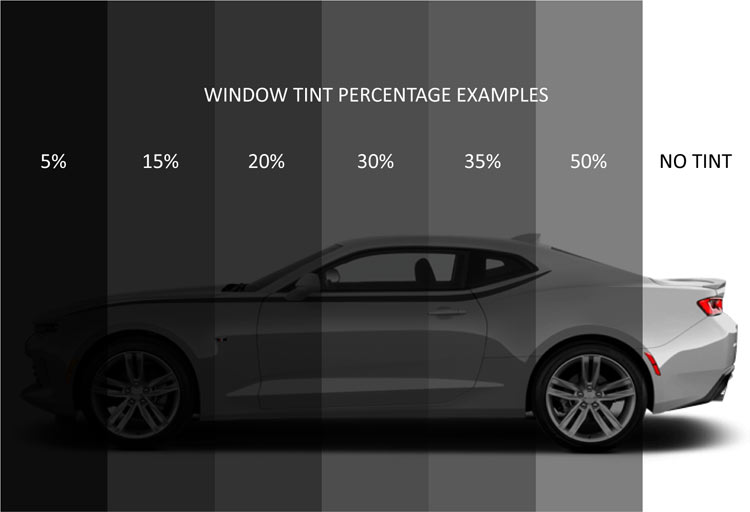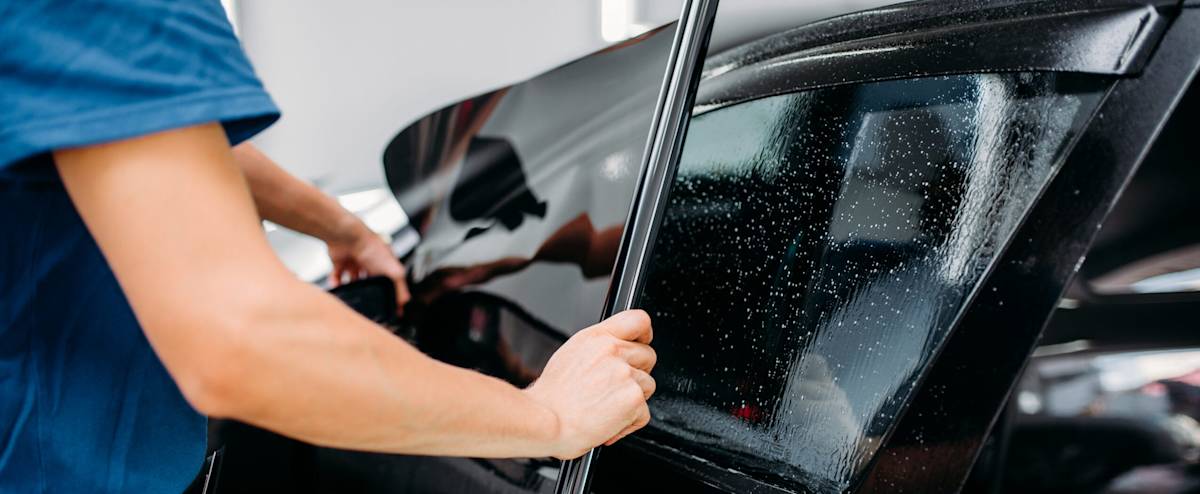AO Detail Window Tintingfor Enhanced Appearance and Privacy
Keep Cool and Comfortable: The Science Behind Window Tinting
Window tinting stands for an advanced interplay of materials science and sensible application, operating mostly with a thin film that modifies the means light engages with glass. As we check out the various mechanisms and advantages connected with Window tinting, it ends up being apparent that its impact expands beyond comfort, affecting power consumption and ecological sustainability.

How Window Tinting Functions
Window tinting runs through the application of a thin film to the glass surface, which offers to change the means light interacts with the Window. This film is normally made up of polyester or various other artificial materials and is embedded with various dyes and metals that influence light transmission and reflection. When light strikes the tinted Window, a part of it is soaked up, while some is mirrored, and the rest travels through.

Moreover, Window tinting can enhance privacy and lower glare, making rooms more comfy without compromising exposure. The performance of Window tinting varies based upon variables such as the sort of movie made use of, the angle of light incidence, and the attributes of the glass. Understanding these principles is crucial for selecting the proper color for particular requirements and atmospheres.
Advantages of UV Defense
One of one of the most substantial advantages of Window tinting is its ability to supply reliable UV protection. Ultraviolet (UV) radiation from the sun is a well-documented reason for skin damages, consisting of premature aging and an enhanced threat of skin cancer cells (AO Detail Window Tinting). By incorporating Window tinting, individuals can considerably minimize their direct exposure to harmful UV rays, enhancing their overall health and well-being
Top quality Window film can block up to 99% of UV radiation, developing a more secure atmosphere for residents. Window tinting helps mitigate these results, maintaining the aesthetic appeal and honesty of interior areas.
On top of that, several Window film supply a double benefit by reducing glow, which can improve comfort and performance. Generally, the implementation of Window tinting functions as a positive step to safeguard wellness and extend the life of cherished ownerships, making it a prudent financial investment for both business and domestic setups.
Temperature Level Regulation Devices
Effective temperature level policy is an essential advantage of Window tinting, as it adds to a much more comfortable interior environment. Window film are created to reflect, soak up, and transmit varying degrees of solar power, permitting for a controlled administration of heat going into a room. This policy is largely accomplished via the optical residential properties of the tint, which can block a substantial percentage of infrared radiation while permitting noticeable light to pass through.
By minimizing warmth gain during warmer months, Window tinting assists keep a stable indoor temperature level, decreasing the reliance on a/c systems. Alternatively, during cooler months, specific kinds of Window film can aid keep warm within the structure. This twin functionality additional hints makes sure that owners experience consistent comfort despite exterior climate condition.
Furthermore, Window tinting can reduce temperature level variations brought on by straight sunshine, reducing the risk of hot areas near windows. Consequently, the total indoor climate comes to be extra well balanced, boosting owner satisfaction and performance. The scientific research behind these temperature level guideline devices highlights the relevance of Window tinting as a functional service for enhancing living and working environments.
Enhancing Power Effectiveness
Energy efficiency is considerably enhanced via the application of Window tinting, more structure upon the benefits of temperature regulation. By lowering the amount of solar warm that enters a structure, Window tinting minimizes the dependence on cooling systems, causing lower power intake. This not only adds to minimized utility bills yet likewise lowers greenhouse gas emissions connected with energy manufacturing.
Along with heat decrease, Window tinting likewise helps keep steady indoor temperature levels, which can decrease the work on heater during chillier months. This dual advantage of controling both warmth gain and loss cause a more reliable overall power performance for business and property residential properties alike.
Moreover, Window tinting can safeguard furnishings and interiors from hazardous UV rays, which can cause fading and deterioration gradually. By preserving the stability of interior areas, homeowner can decrease the regularity of repairs and replacements, better enhancing expense financial savings.
Ultimately, integrating Window tinting as component of an energy-efficient strategy not only maximizes convenience but likewise advertises sustainability, making it a sensible investment for those seeking to boost their power footprint.
Selecting the Right Color
Selecting the appropriate Window color is critical for maximizing the advantages of this improvement. The option of tint can considerably impact energy performance, appearances, and personal privacy. When thinking about Window tinting, it is necessary to evaluate the different types of film available, including colored, metalized, and ceramic choices.
Ceramic Window film stand for a superior choice, combining excellent thermal insulation with reduced reflectivity, consequently preserving a clear sight. It is likewise important to consider the lawful policies regarding color darkness in visit your area, as conformity is vital to make sure and avoid penalties security.
In addition, examining your particular demands-- such as UV security, glow reduction, and personal privacy-- will assist your selection procedure. Consulting with a professional installer can give important understandings and recommendations customized my website to your situation. Eventually, the right Window color balances capability and visual appeals, adding to a comfortable and energy-efficient setting.
Conclusion

Window tinting represents a sophisticated interaction of materials scientific research and useful application, functioning largely with a thin movie that alters the method light communicates with glass.Window tinting operates through the application of a thin film to the glass surface, which serves to modify the means light engages with the Window. By integrating Window tinting, people can substantially reduce their direct exposure to hazardous UV rays, boosting their overall wellness and well-being.
In addition, Window tinting can reduce temperature level fluctuations triggered by straight sunlight, minimizing the risk of hot places near windows. When thinking about Window tinting, it is important to examine the numerous types of film offered, consisting of dyed, metalized, and ceramic choices.